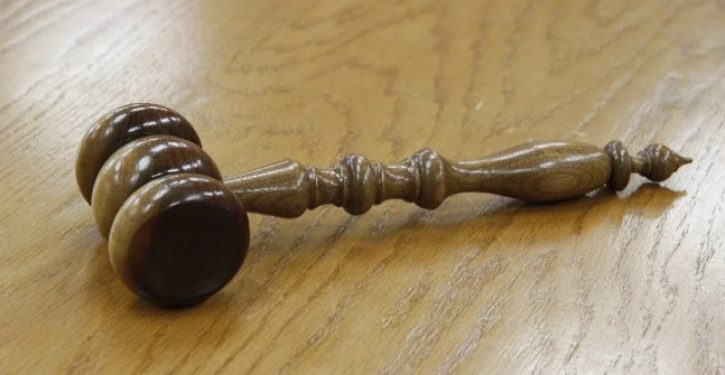
Whoever would overthrow the liberty of a nation must begin by subduing the free acts of speech. – Benjamin Franklin
It’s hard to grasp the fact that, not long ago, social media platforms (SMPs) were uniformly denying that they suppressed speech. Yes, they had terms of service agreements with which users had to comply, but that was well understood and the extent of their interference with free expression. Or so the story went. Few serious observers believed them, but the unbelievers’ evidence was largely anecdotal and hidden by SMPs’ mostly inscrutable rhetoric.
Since then, much has changed. Elon Musk’s turning over internal Twitter communications to journalists like Matt Taibbi, Bari Weiss, Michael Schellenberger, Lee Fang and others ripped the cover off the lies so consistently told by SMPs. The Twitter files demonstrate beyond a shadow of a doubt that the interaction between SMPs and a welter of governmental agencies was pervasive and constant, and that those companies fairly groveled at the feet of the public sector, begging for a “partnership” with government and abjectly apologizing for failing to censor their users more promptly following governmental requests.
Now we have even more, and more damning, evidence of the collusion between government and the SMPs. That’s revealed by the 155-page memorandum ruling issued by Louisiana federal judge Terry Doughty in the case of Missouri, et al vs. Biden, et al, that enjoins numerous federal defendants (nine federal agencies, including the FBI and the Departments of State and Justice, plus 39 individual federal employees and all of their support staff) (pp. 156-58) from continuing to pressure SMPs to suppress the speech of its users (pp. 156-62).
Judge Doughty doesn’t mince words.
If the allegations made by Plaintiffs are true, the present case arguably involves the most massive attack against free speech in United States’ history.
Skeptics of course may argue that the judge’s “if” is a big one. After all, nothing’s been proven yet. But that argument neglects a very important fact – Judge Doughty issued a preliminary injunction. And the most important finding any judge has to make in order to enjoin anyone is that the party requesting the injunction is likely to prevail on the merits of the case at trial. An injunction restricts the liberty of the party who is its object, so the judge has to have plenty of evidence supporting his decision. Judge Doughty’s memorandum shows that he does.
In the case, the plaintiffs allege the deprivation of their right to free speech by governmental agents acting through SMPs. Judge Doughty says that appears to be exactly what happened, that it’s still happening, that it’s happening to an extent that warrants an injunction and that it may be “the most massive attack against free speech in United States’ history,” a devastating charge.
Of Doughty’s 155 pages, about 86 consist of nothing but his recitation of facts established by the discovery process including depositions of defense witness testifying under oath. It’s not possible for me to adequately summarize all those facts here. Suffice it to say that they overwhelmingly justify the issuance of the injunction and give the reader an astonishing look at what has been going on for at least seven years behind the veil of secrecy that has, until now, shielded from public view the collaboration of government and SMPs to deny protected speech to the American public.
Surely the most shocking lesson from Doughty’s recitation of facts is that countless governmental actors, both agencies and individuals, evince not the slightest notion that there even is such a thing as the First Amendment to the Constitution or its guarantee of the right of free speech. In 86 pages of facts, there appears precisely one person, Renee DiResta of the Stanford Internet Observatory, who even mentioned the First Amendment (p.73) and then only to admit in passing that the process the government was engaging in was to “get around… very real First Amendment questions.”
Beyond that single instance, there’s nothing. Day after day for years, these people demanded of SMPs and got the censorship of speech that any second-year law student could tell was constitutionally protected. After reading those 86 pages, it’s hard to avoid concluding that those governmental actors believed without question that they were free to censor any and all speech they chose.
So, for example, they demanded and got the censoring of videos that did nothing but satirize Jill Biden (p.25) and Anthony Fauci (p.56), plainly protected speech. The Great Barrington Declaration, an epidemiologically sensible criticism of COVID policies, was, at their behest, censored (p.55). The lab-leak theory of COVID’s origin was censored as well (p.52). The Hunter Biden laptop story, broken by the New York Post, was taken down in October of 2020 despite the fact that the FBI had known since December of 2019 that it was genuine and not “Russian disinformation.”(p.63) Amazingly, when Facebook personnel asked about the laptop, FBI official Laura Dehmlow simply refused to tell what the Bureau had long known (p.63), thereby intentionally allowing the “Russian disinformation” hoax to become the accepted narrative.
Here’s Judge Doughty’s brief summary of speech that the government demanded to be suppressed by SMPS and was:
Opposition to COVID-19 vaccines; opposition to COVID-19 masking and lockdowns; opposition to the lab-leak theory of COVID-19; opposition to the validity of the 2020 election; opposition to President Biden’s policies; statements that the Hunter Biden laptop story was true; and opposition to policies of the government officials in power. All were suppressed.
And all were unquestionably protected speech, almost all of which was uttered by Americans.
But that’s not all.
What is really telling is that virtually all of the free speech suppressed was “conservative” free speech. Using the 2016 election and the COVID-19 pandemic, the Government apparently engaged in a massive effort to suppress disfavored conservative speech.
And that which wasn’t strictly conservative was speech that opposed governmental policy, the Great Barrington Declaration being but one example.
Plus, because that censorship was consistently either anti-conservative or anti-government policy in nature, it constitutes what First Amendment jurisprudence calls “viewpoint discrimination,” i.e., the suppression not just of protected speech generally, but of specific points of view because of the content of those points of view.
And that, as the Supreme Court has said many times, is a particularly egregious form of censorship (p.88) that, for all intents and purposes, can never pass constitutional muster.
More on this next time.


